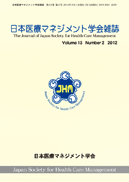Volume 16, Issue 2
Displaying 1-5 of 5 articles from this issue
- |<
- <
- 1
- >
- >|
Original Articles
-
Article type: Original Articles
2015Volume 16Issue 2 Pages 70-74
Published: September 01, 2015
Released on J-STAGE: October 11, 2021
Download PDF (610K) -
Article type: Original Articles
2015Volume 16Issue 2 Pages 75-81
Published: September 01, 2015
Released on J-STAGE: October 11, 2021
Download PDF (976K)
Case Reports
-
Article type: Case Reports
2015Volume 16Issue 2 Pages 82-86
Published: September 01, 2015
Released on J-STAGE: October 11, 2021
Download PDF (1152K) -
Article type: Case Reports
2015Volume 16Issue 2 Pages 87-91
Published: September 01, 2015
Released on J-STAGE: October 11, 2021
Download PDF (832K) -
Article type: Case Reports
2015Volume 16Issue 2 Pages 92-98
Published: September 01, 2015
Released on J-STAGE: October 11, 2021
Download PDF (802K)
- |<
- <
- 1
- >
- >|
